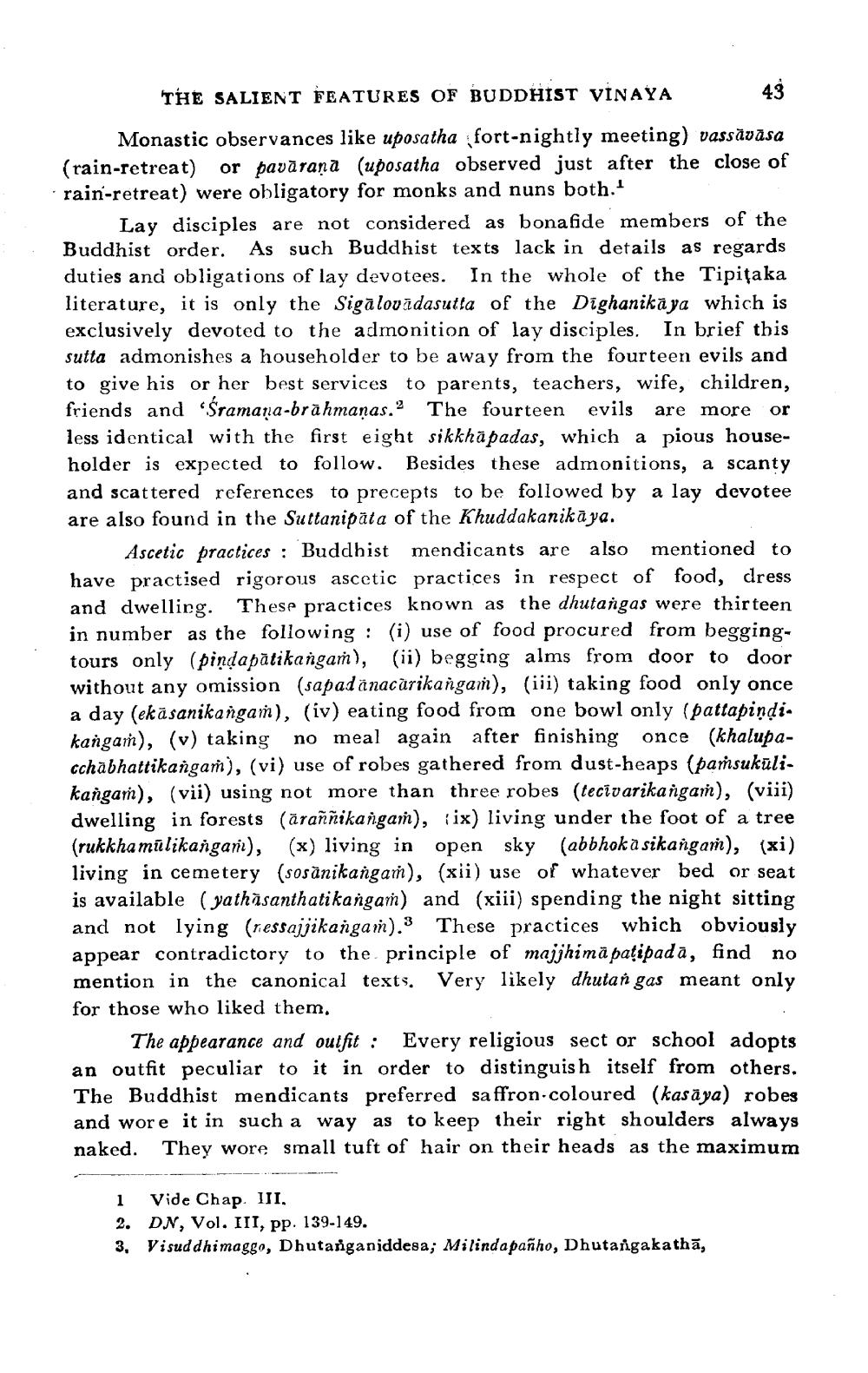________________
THE SALIENT FEATURES OF BUDDHIST VINAYA 49 Monastic observances like uposatha fort-nightly meeting) vassāvāsa (rain-retreat) or pavārana (uposatha observed just after the close of rain-retreat) were obligatory for monks and nuns both.
Lay disciples are not considered as bona fide members of the Buddhist order. As such Buddhist texts lack in details as regards duties and obligations of lay devotees. In the whole of the Tipitaka literature, it is only the Sigalovādasutta of the Dighanika ya which is exclusively devoted to the admonition of lay disciples. In brief this sutta admonishes a householder to be away from the fourteen evils and to give his or her best services to parents, teachers, wife, children, friends and 'Sramana-brāhmaṇas.2 The fourteen evils are more or less identical with the first eight sikkhāpadas, which a pious householder is expected to follow. Besides these admonitions, a scanty and scattered references to precepts to be followed by a lay devotee are also found in the Suttanipata of the Khuddakanikaya.
Ascetic practices : Buddhist mendicants are also mentioned to have practised rigorous ascetic practices in respect of food, dress and dwelling. These practices known as the dhutangas were thirteen in number as the following: (i) use of food procured from beggingtours only (pindapātikangaṁ), (ii) begging alms from door to door without any omission (sapadanacàrikangam), (iii) taking food only once a day (ekäsanikangań), (iv) eating food from one bowl only (pattapindi. kangań), (v) taking no meal again after finishing once (khalupacchābhattikangam), (vi) use of robes gathered from dust-heaps (pamsukūli. kangaṁ), (vii) using not more than three robes (tecīvarikangam), (viii) dwelling in forests (āraññikangam), ix) living under the foot of a tree (rukkhamūlikangan), (x) living in open sky (abbhok a sikangam), (xi) living in cemetery (sosānikangań), (xii) use of whatever bed or seat is available (yathāsanthatikangaṁ) and (xiii) spending the night sitting and not lying (ressajjikangam).3 These practices which obviously appear contradictory to the principle of majjhimā patipada, find no mention in the canonical texts. Very likely dhutan gas meant only for those who liked them.
The appearance and outfit : Every religious sect or school adopts an outfit peculiar to it in order to distinguish itself from others, The Buddhist mendicants preferred saffron coloured (kas āya) robes and wore it in such a way as to keep their right shoulders always naked. They wore small tuft of hair on their heads as the maximum
i Vide Chap. III, 2. DN, Vol. III, pp. 139-149. 3. Visuddhi maggo, Dhutanganiddesa; Milindapañho, Dhutarigakathā,




